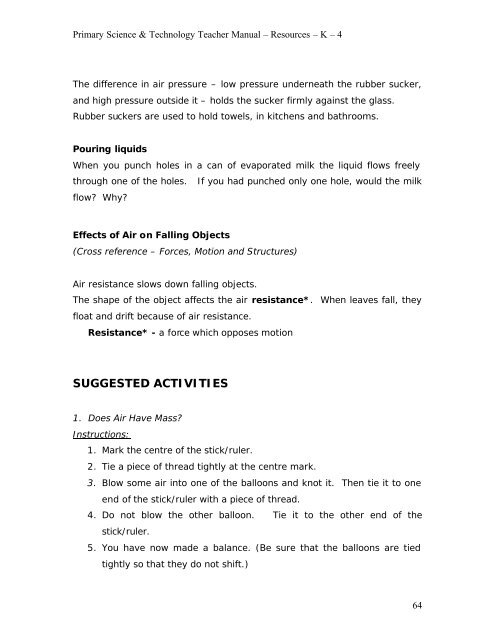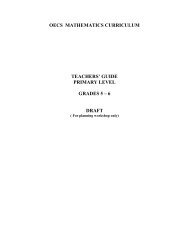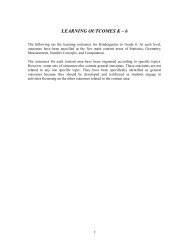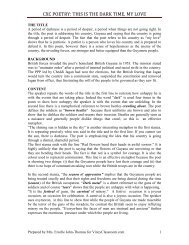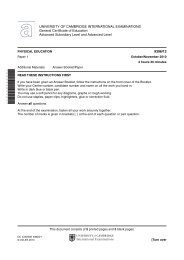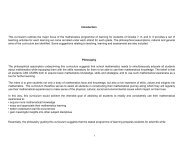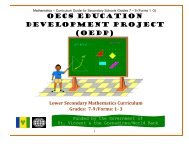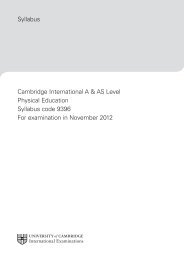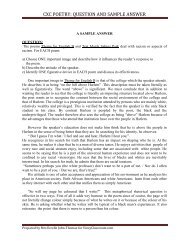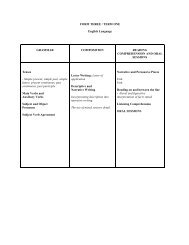Primary Science and Technology Teachers' Guide - OECS
Primary Science and Technology Teachers' Guide - OECS
Primary Science and Technology Teachers' Guide - OECS
You also want an ePaper? Increase the reach of your titles
YUMPU automatically turns print PDFs into web optimized ePapers that Google loves.
<strong>Primary</strong> <strong>Science</strong> & <strong>Technology</strong> Teacher Manual – Resources – K – 4<br />
The difference in air pressure – low pressure underneath the rubber sucker,<br />
<strong>and</strong> high pressure outside it – holds the sucker firmly against the glass.<br />
Rubber suckers are used to hold towels, in kitchens <strong>and</strong> bathrooms.<br />
Pouring liquids<br />
When you punch holes in a can of evaporated milk the liquid flows freely<br />
through one of the holes. If you had punched only one hole, would the milk<br />
flow? Why?<br />
Effects of Air on Falling Objects<br />
(Cross reference – Forces, Motion <strong>and</strong> Structures)<br />
Air resistance slows down falling objects.<br />
The shape of the object affects the air resistance*. When leaves fall, they<br />
float <strong>and</strong> drift because of air resistance.<br />
Resistance* - a force which opposes motion<br />
SUGGESTED ACTIVITIES<br />
1. Does Air Have Mass?<br />
Instructions:<br />
1. Mark the centre of the stick/ruler.<br />
2. Tie a piece of thread tightly at the centre mark.<br />
3. Blow some air into one of the balloons <strong>and</strong> knot it. Then tie it to one<br />
end of the stick/ruler with a piece of thread.<br />
4. Do not blow the other balloon. Tie it to the other end of the<br />
stick/ruler.<br />
5. You have now made a balance. (Be sure that the balloons are tied<br />
tightly so that they do not shift.)<br />
64


